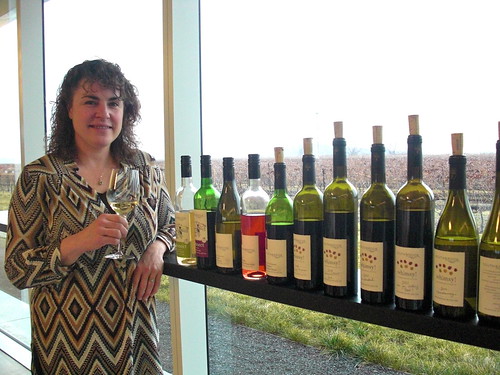
There is absolutely nothing pretentious about winemaker Ann Sperling. She walks the walk and talks the talk on sustainable, organic and biodynamic grape growing and takes a minimalist approach to making wine in the winery.
Her quest, the challenge that she issues to herself, is to reduce winemaking to the least amount of intervention as she can. That means 100% organic and biodynamic grapes and as little manipulation in the winery as possible, including wild yeast fermentations and very little filtering/fining, in the making of the wines at Southbrook Vineyards.
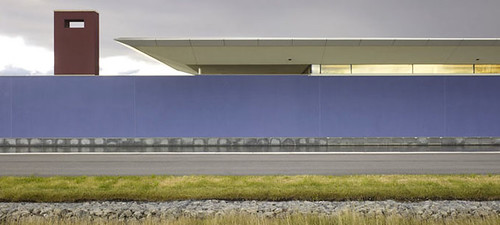 “I’m always on some sort of pursuit with wine,” she tells me with conviction. “I like to learn more and more and dig deeper.”
“I’m always on some sort of pursuit with wine,” she tells me with conviction. “I like to learn more and more and dig deeper.”
When you mention the ultimate in non-interventionist form of winemaking, natural wines, she believes that is a goal that is likely not be attainable in a cool, often humid climate such as Niagara.
“Everything we do is like natural winemaking,” Sperling says. “But we use sulphur,” she adds.
Sulphur dioxide, which is the most controversial component in the natural wine making debate, plays two important roles. Firstly, it is an anti-microbial agent, and can be used to help curtail the growth of undesirable fault-producing yeasts and bacteria. Secondly, it acts as an antioxidant, safe guarding the wine’s fruit integrity and protecting it against browning.
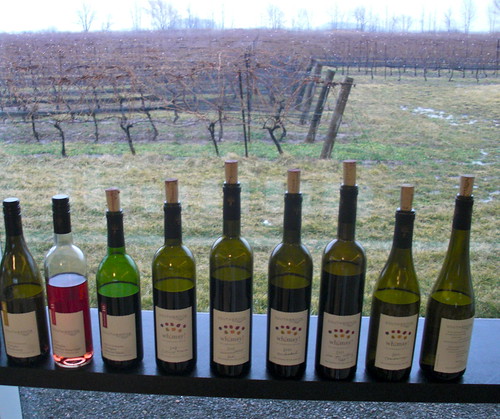
Natural winemakers, at least the purists, do not use it at all and say wine cannot be called natural if added in the winemaking process.
While Sperling uses as little sulphur as she can in Southbrook wines, she’s not ready to go all in — at least not yet. She does not want to sacrifice the structure and integrity of the wine.
“It’s always banging around in the back on my mind,” she confesses. “I’m thinking about a 100% natural wine.” And, by that, she means she’s got some experiments currently on the go.
For now, making certified organic and mostly certified biodynamic wines is crucial for Southbrook. It permeates through all the wines made at the Niagara-on-the-Lake winery, right down to the LCBO general list Connect wines that sell for $15.
The Connect Red and White wines have been a successful brand launch for Southbrook with “people really responding to the wine and the organic label,” says Sperling. “We wanted to be in that channel (the LCBO). We wanted to be on the general list with an organic wine.”
Southbrook has worked hard to clearly define its tiers. They are:
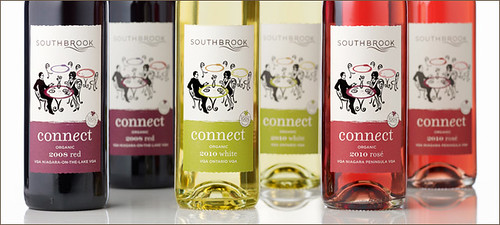
Connect — These are made for casual enjoyment with family and friends. Connect White and Red wines are made from organically-grown grapes, with the Red being certified biodynamic.
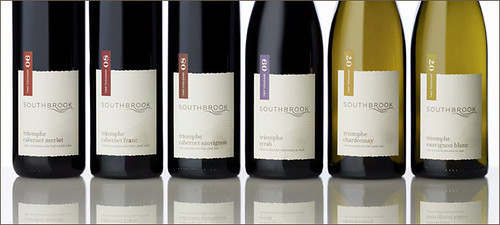
Triomphe — The mainstay of Southbrook’s family of wines. The name is derived from the Latin triomphus, the legendary song of praise to Bacchus, god of wine in Greek mythology. It is Southbrook’s varietal line of wines.
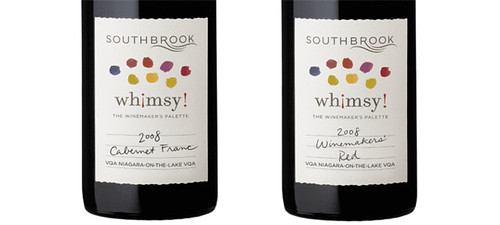
Whimsy! — These are small batch, artisanal wines with each paint dab on the label representing a different varietal in the Southbrook family. The Whimsy! wines give the winemaker wide latitude, to try new techniques with individual lots or to allow each to be what it wants to be. The final result may be the ultimate expression of a particular varietal, or it may be utterly idiosyncratic. This is where Sperling “can go off on a tangent.”

Poetica — The flagship tier wines are not made every year. When the vintage excels, Sperling selects one white and/or one red to become Poetica. The poetry on the labels is drawn from the work of a wide cross-section of talented Canadian poets and reflects, in some way, a love theme. The wine honours the poem on the label, and the poem honours the wine in the bottle. Only 11 wines have been made in the Poetica family featuring outstanding vintages from 1998 to 2007. These grape varieties demonstrate what Southbrook loves about the terroir of Niagara-on-the-Lake. In showcasing wines that go back more than a decade, Southbrook is celebrating Niagara’s ability to produce excellent wines that age beautifully. Most are from tiny batches, with limited edition numbering on the bottles.
Southbrook also makes a selection of fruit wines and icewines.
I sat down to taste the upcoming releases of Southbrook’s four table wine series. Here is what I liked:
Southbrook Connect White 2011 ($15, LCBO, 87 points) — The white Connect is made from 100% Vidal grapes from estate and grower certified organic fruit. It’s a low alcohol wine (9%) and shows lovely peach, citrus and fresh tropical fruits. It’s fruity and fleshy on the palate with ripe flavours for every day drinking.
Southbrook Connect Red 2011 ($15, LCBO, 88 points) — All estate fruit, this blend of Cabernet Franc, Cabernet Sauvignon and Merlot sees light oak aging. What a nice red wine at a great pricepoint. A nose of currants, bramble, smoke and licorice. It’s juicy on the palate with rich cassis, subtle spice and pretty good structure.
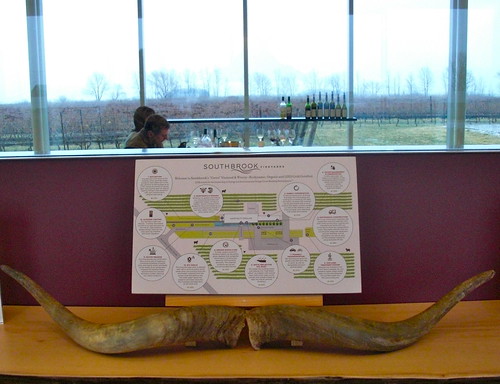
Southbrook Triomphe Rose Cabernet Franc Rose 2011 ($20, winery in July, 87 points) — A delicious and inviting rose with cherry-strawberry fruit and a whiff of cranberry. It’s a touch off-dry on the palate with broad red-fruit flavours but balanced out by fairly good acidity.
Southbrook Triomphe Chardonnay 2010 ($22, June release, 88 points) — All estate organic-biodynamic fruit and aged in 100% French oak barrels of varying sizes. Very ripe pear, apple, toast and spice notes on the nose. It’s made in a round, expressive style with a nice mineral note to go with light toast, subtle butterscotch and layered fruits through the finish. Nicely balanced Chardy.
NOTE: I also had a taste of the Triomphe Cabernet Franc 2010 (released in August). It is gorgeous, even now, with ripe cassis, spice and plump juicy fruits through the finish. Another fine example of the Cab Francs produced in the warm 2010 vintage.
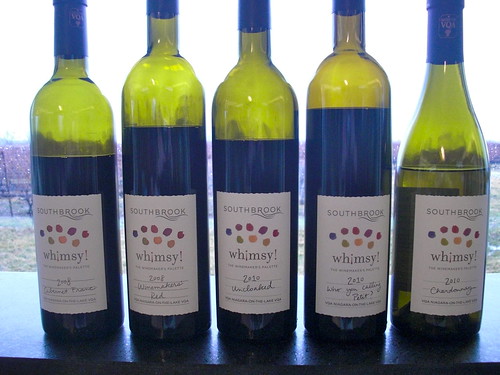 Southbrook Whimsy! Cabernet Franc 2008 ($35, winery now, 89 points) — Cab Franc is a staple of the Whimsy! series of wines. Sperling is considering releasing the 2010 vintage before the 2009 wines but still has a bit of the wonderful 2008s, released in the fall, to sell through. The nose shows cassis, blackberry, blueberry, kirsch and raspberry with nicely integrated oak spices. Unmistakably Cab Franc in the mouth with good varietal fruit, roasted herbs, cedar and spice.
Southbrook Whimsy! Cabernet Franc 2008 ($35, winery now, 89 points) — Cab Franc is a staple of the Whimsy! series of wines. Sperling is considering releasing the 2010 vintage before the 2009 wines but still has a bit of the wonderful 2008s, released in the fall, to sell through. The nose shows cassis, blackberry, blueberry, kirsch and raspberry with nicely integrated oak spices. Unmistakably Cab Franc in the mouth with good varietal fruit, roasted herbs, cedar and spice.
Southbrook Whimsy! Uncloaked Merlot 2010 ($35, Wine Club now, winery in April, 90 points) — Made entirely from certified organic and biodynamic estate fruit chosen from seven different neutral (hence the name Uncloaked, as in no new oak) barrels. This is a really fine Merlot with a fruit-forward nose of ripe cassis, currants, cherries and underlying spice. It’s all about the purity of fruit in the mouth, with darker fruits coming to the front of the palate and cherry-red fruits in the mid-palate. A richly flavoured Merlot that lets the fruit do all the talking.
Southbrook Whimsy! “Who You Calling Petit” Petit Verdot 2010 ($35, Wine Club now, winery in April, 91 points) — The debut of this variety from less than an acre of Petit Verdot planted at the estate. Only a tiny amount is available (two barrels, or 48 cases). The wine was aged in 100% oak from the Bertranges forest in France for six months. There’s a lot to like about this big red and it starts on the nose with plums, cassis, herbs, layers of sweet spices and a touch of licorice. The array of dense, powerful fruits on the palate is backed up by firm tannins and high acids. A keeper for the cellar.
Southbrook Whimsy! Chardonnay 2010 ($35, June release, 91 points) — Wow, such an expressive nose of pear, pineapple, bright apples, brioche and toasty vanilla notes from aging in large French oak barrels. This delicious Chard is intense in the mouth with a ripe core of pear-apple fruit, opulent oak-inspired spice stylings, toasted almonds and vanilla. A lip-smacking good Chardonnay.
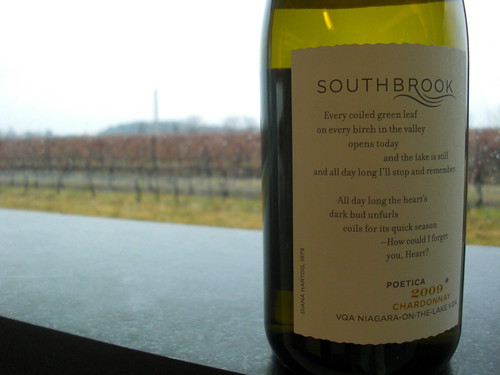
Southbrook Poetica Chardonnay 2009 ($50, winery now, 93 points) — The flagship white from Southbrook and it lives up to its lofty place on the hierarchy. Such a beautiful Chardonnay and easily one of the top three made in Niagara. Sperling says the winemaking “adheres to the traditional model of Burgundy” and more specifically the Chards of Meursault. The grapes for this wine were whole cluster pressed and the settled juice racked to barrel where indigenous yeast and malolactic bacteria fermented the juice. After 10 months of aging the top selection of barrels were combined to make the Poetica.
Only 60 cases of this exquisite wine were made and only five cases remain. The complex nose shows apple-pear-pineapple fruit, brioche, gun flint, mineral, and vanilla cream. This is exciting stuff on the palate with lush fruits delivered on a spine of racy acidity. It shows elegance and power with weight in the mouth to go with ripe apple-pear fruit, a touch of butterscotch cream and a vein of minerality that runs through the core. This, like most the Poetica Chards, has the stuffing to mature gracefully for many years down the road.


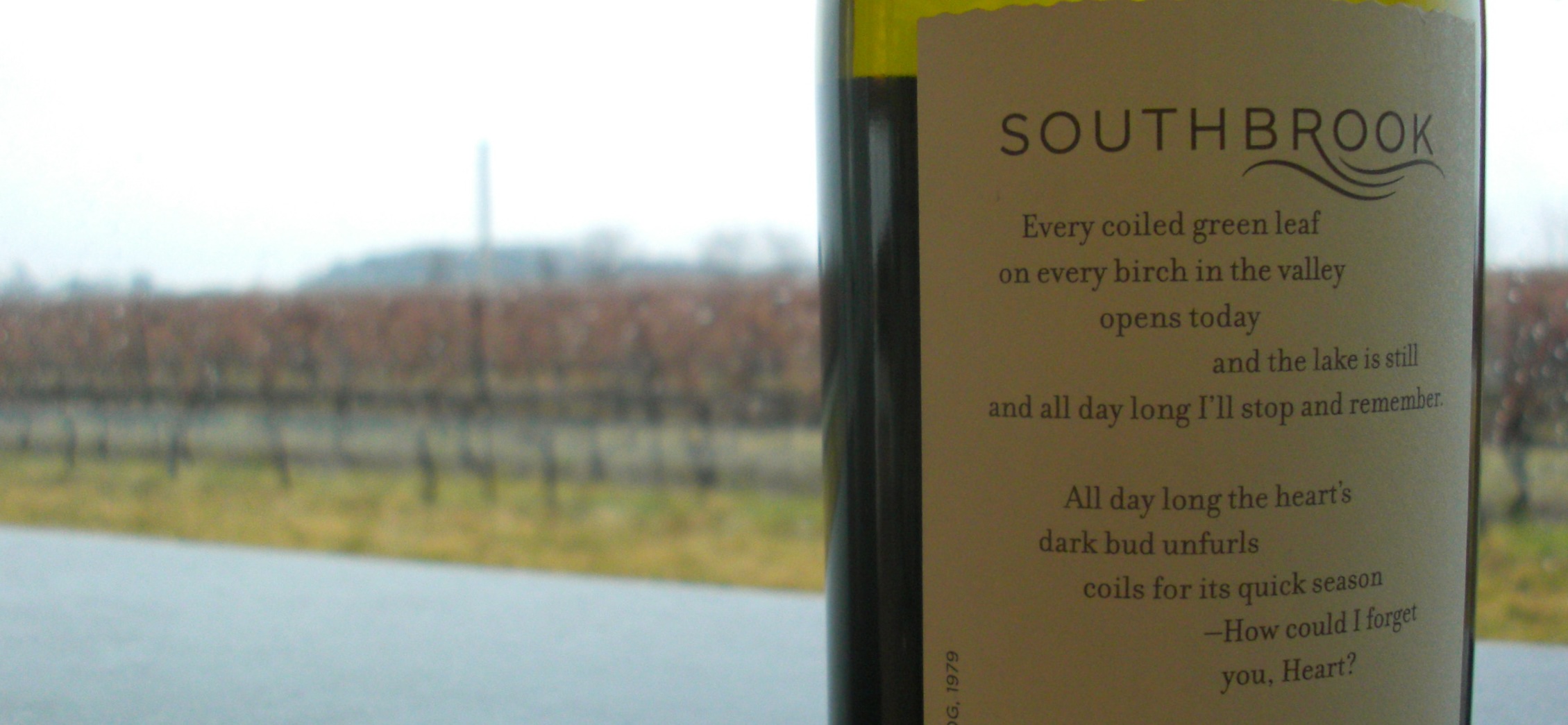



I’m still holding on to a bottle of the ’04 Poetica Chardonnay. The poem on the label was written by Martin Tielli, one of my favourite musicians. I *really* need to think of a reason to open a bottle that special.
Dan … those Chards are so long-lived. I tried the 98 not too long ago and it was still amazing. Let me know if you need help with the 04 ;-)